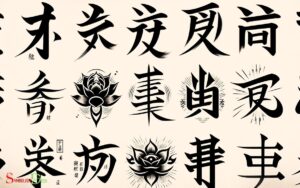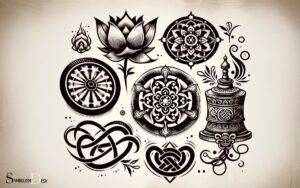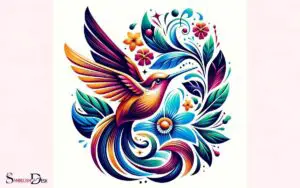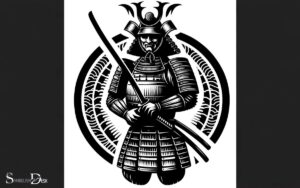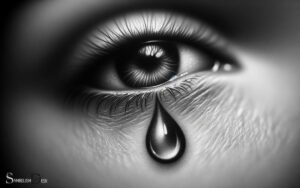Muay Thai Tattoo Symbols and Meanings: Explain!
Muay Thai tattoos, known as Sak Yant, are a form of traditional body art with deep cultural and spiritual significance.
Each tattoo consists of geometric designs, ancient script, and symbolic imagery that are believed to provide protection, strength, and other benefits to the wearer.
Explanation The Sak Yant tattoos are typically comprised of:
- Geometric patterns called Yantra.
- Sacred Pali script with Buddhist prayers or magical incantations.
- Images of animals or deities, each with a specific meaning and power.
For example, the Hah Taew (Five Lines) Sak Yant represents five blessings, including protection, charisma, and fortune.
Supporting Paragraph Explore the mystical significance of Sak Yant, where each line and curve is imbued with protective powers and cultural heritage.
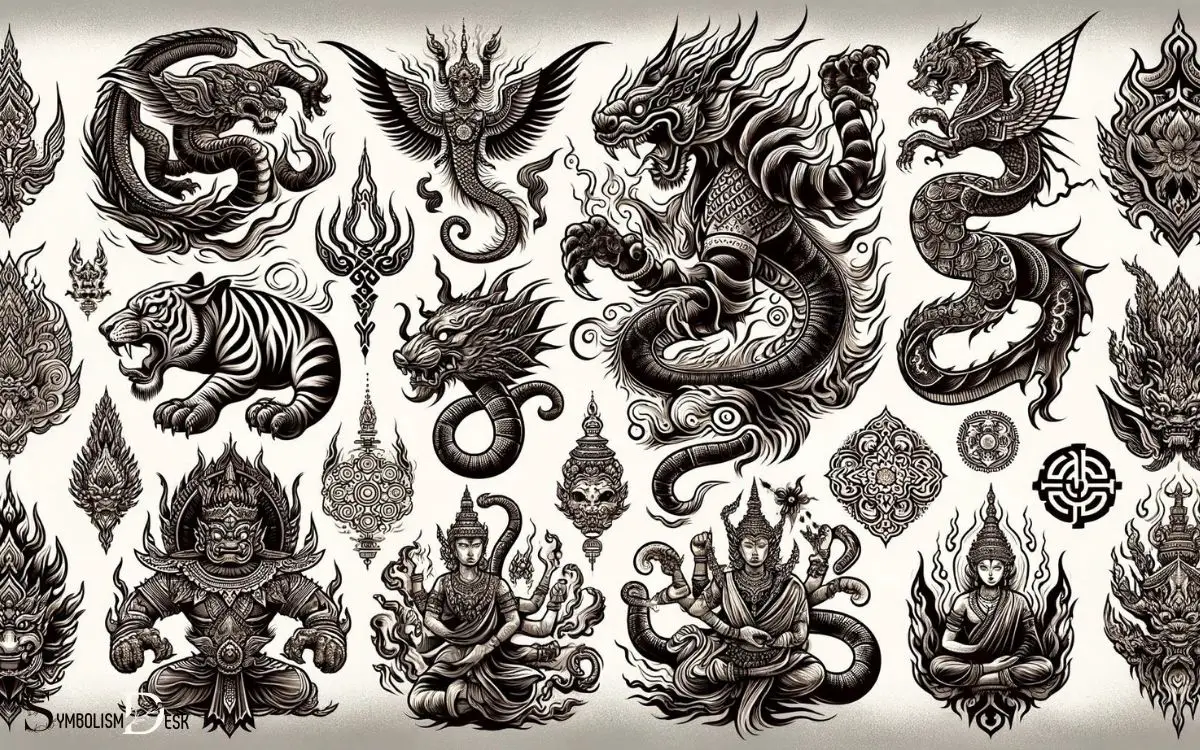
Key Takeaway
Origins of Muay Thai Tattoos
One might trace the origins of Muay Thai tattoos back to ancient Southeast Asian cultures, where they were believed to offer protection and provide spiritual strength to fighters.
These tattoos, known as Sak Yant or Yantra tattoos, were traditionally hand-poked by Buddhist monks or Brahmin priests using a long metal spike called a ‘mai sak’ and a special ink made from natural ingredients.
The intricate designs often incorporated ancient symbols and Khom script, believed to possess magical powers and offer blessings for the wearer. These tattoos weren’t just seen as body art, but as a source of spiritual power and protection in battle.
Over time, Muay Thai fighters began to embrace these tattoos as a symbol of their dedication to the sport and as a means of invoking ancient blessings for strength and resilience in combat.
Traditional Muay Thai Tattoo Designs
Traditional Muay Thai tattoo designs incorporate a variety of symbols and scripts believed to hold spiritual significance and provide protection and strength for the wearer, reflecting the ancient traditions and beliefs of Southeast Asian cultures.
These designs often feature animals such as tigers, snakes, and mythical creatures like the Hanuman, representing power, agility, and protection. Sacred geometrical patterns like Yantra designs are also commonly used, believed to bring luck, strength, and protection from harm.
Additionally, Buddhist and Hindu deities such as Ganesha and Sak Yant symbolize wisdom, guidance, and spiritual protection.
Traditional Thai scripts and mantras are another element found in these tattoos, carrying protective and empowering meanings for the wearer.
These elements are carefully chosen and combined to create unique tattoos that hold deep cultural and spiritual significance in the practice of Muay Thai. These designs hold profound meanings for those who wear them.
Symbolism of Muay Thai Tattoo Elements
The symbolism of muay thai tattoo elements reflects both cultural traditions and spiritual beliefs, intertwining to convey powerful meanings for the wearer.
Each element carries significant symbolism, such as the tiger representing strength, courage, and protection, while sak yant designs symbolize blessings, luck, and protection from harm.
The use of sacred geometrical designs, such as yantra tattoos, is believed to provide mystical powers and protection.
Animal imagery, like the Hanuman monkey, signifies agility, loyalty, and intelligence. Additionally, the use of Buddhist symbols, such as the lotus flower, represents purity, enlightenment, and spiritual awakening.
These elements are carefully chosen by the wearer to convey personal attributes, strengths, and beliefs, creating a deeply meaningful and culturally rich tapestry of symbolism within muay thai tattoos.
Cultural Significance of Muay Thai Tattoos
Continuing from the previous subtopic, individuals who choose to adorn themselves with muay thai tattoos often do so to honor their cultural heritage and express their personal beliefs. The cultural significance of muay thai tattoos is deeply rooted in Thai tradition and spirituality.
These tattoos are considered a sacred form of art and are believed to offer protection, strength, and blessings to the wearer. They also serve as a symbol of loyalty and respect for the ancient traditions of muay thai.
Additionally, muay thai tattoos are a way for individuals to connect with their roots and showcase their pride in Thai culture.
Moreover, these tattoos often depict mythical creatures and deities that hold special significance in Thai folklore and history.
Evolution of Muay Thai Tattoo Practices
Ancestors of Muay Thai practitioners initiated the evolution of tattoo practices as a means to symbolize their connection to the martial art and its spiritual significance.
Over time, these tattoos have evolved to encompass a wide range of meanings and styles.
Modern Muay Thai tattoo practices often involve intricate designs that blend traditional symbols with contemporary elements.
Additionally, the significance of these tattoos has expanded beyond martial arts, with individuals from various backgrounds embracing the art form.
The evolution of Muay Thai tattoo practices reflects the enduring cultural relevance of the martial art and its associated symbolism.
Today, practitioners and enthusiasts continue to honor the tradition of receiving these tattoos, further contributing to the ongoing evolution of this unique form of body art.
Conclusion
Muay Thai tattoos are deeply rooted in the history and culture of Thailand, and hold significant meaning for those who practice the martial art. Many Muay Thai practitioners choose to get tattoos of traditional Thai symbols, such as the Sak Yant, which are believed to bestow protection and blessings. These tattoos often incorporate Chinese symbol meanings, such as strength, courage, and perseverance, further reinforcing the fighter’s dedication to their practice. Overall, Muay Thai tattoos serve as a visual representation of the individual’s commitment to the martial art and their connection to its rich cultural heritage.
The symbols and designs of these tattoos carry rich symbolism and cultural significance, representing strength, courage, and protection.
For example, a Muay Thai fighter who receives a tattoo of a tiger may believe it brings them the qualities of the powerful and ferocious animal, enhancing their skills in the ring.

